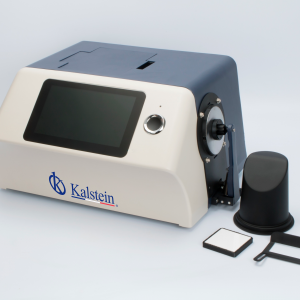The importance of color as a physical characteristic and quality in food have a relevant role related to food additives. Consumers prefer attractive-looking products, and color is the first thing they evaluate. Usually, dyes are used to highlight the natural color of foods or to return the color lost in chemical processes carried out for their preservation. However, color in foods is not just an aesthetic attribute.
The dyes can be of natural or synthetic origin, legally they are considered an additive. These substances belong to the group of additives that present the greatest differences in the legislation of the countries. Its use could generate situations that harm the health of the consumer, since the product may not be as expected, or in the worst case be toxic. In general, in the legal regulations of each country there are different requirements on the type of dye, the concentration and the declaration of the ingredient in the labeling, it is also mandatory to characterize the food by the permisology associated with marketing. For this reason, it is necessary to have analytical methods that allow obtaining comparable and reproducible values. Spectrophotometers are ideal for measuring concentrations of food additives.
In the area of food science, research has also been reported where spectrophotometers have been used to quantify amounts of sodium, calcium, potassium and magnesium in milk derivatives, as well as have evaluated the presence of minerals in samples of egg and sodium, potassium, calcium, zinc and iron in chocolate samples. In all cases scientists have considered spectrophotometry to be a sensitive, reproducible, simple and economical analytical technique. In comparative studies with other techniques, the authors conclude that this is the best option for analysis.
A little history
The spectrophotometer, invented in 1940 by Arnold J. Beckman and collaborators, was the Beckman company’s greatest discovery. Before this, the chemical analysis was cumbersome and late. At first the technology of the equipment was experimental, which led to constant redesign, along the way the hydrogen lamp was invented, which offered improvements. Over time it was automated and the speed of response improved, gradually incorporating control and detection systems that have resulted in the current spectrophotometer.
Spectrophotometer for food analysis
The spectrophotometer is an optical analysis equipment that is used in laboratories, to determine, identify, and quantify the energy of the light beam of an electromagnetic radiation that is absorbed, transmitted or reflected by a material. When the molecule absorbs a photon it increases its energy, moving to an excited state. This absorption results in electron transitions between energy levels, as well as simultaneously vibrational and rotational transitions. This difference is specific to certain species, so the equipment yields absorption spectra that are unique to each substance and are often used as a fingerprint. This technique makes possible the quantitative analysis of species concentrations and strengthens information on the nature of the substance.
Spectrophotometers are characterized by being composed basically of
- The source, whose power does not change at the wavelength considered for analysis.
- The selectors, which allow you to isolate the wavelength necessary for the analyte to be absorbed. It functions as a kind of filter that selectively let the desired lengths pass, absorbing the rest.
- Cells or buckets are optically transparent containers in which the dissolved sample is placed.
- Radiation detectors are responsible for transforming the signal into an electrical one. They must be sensitive to low background noise, have an amplifiable signal and rapid response.
- Signal processors and reading devices.
At Kalstein MANUFACTURERS, the table spectrophotometer YR053406 is ideal for performing color analysis in food. It is a laboratory equipment that offers a 7 inch touch screen, with a friendly interface, Bluetooth, dual matrix CMOS sensor of 256 picture elements, long life stable LED, UV LED and Xenon lamp. The reflective spectrum, the transmissive and the built-in temperature sensor, allows accurate calculations. The wavelength range is from 360 nm to 780 nm. For more information about all our equipment, for PURCHASE or SALE you can visit our website: HERE

